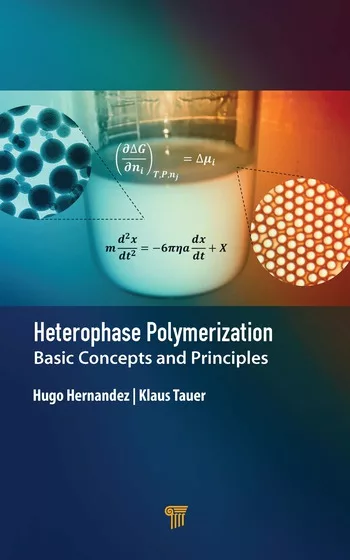Buckyballs Named National Historic Chemical Landmark
WASHINGTON, DC - The American Chemical Society (ACS) honored the discovery of fullerenes, the scientific achievement that gave birth to nanotechnology, as a National Historic Chemical Landmark in a ceremony held at Rice University in Houston, TX, on October 11.
Fullerenes are commonly called buckyballs, and they form the basis of nanotechnology, the field of engineering extremely small structures and devices.
The discovery of buckyballs, with their famous soccer-ball molecular structure, gave birth to the field of nanotechnology and opened new vistas in science. “When Nobel Laureates Robert Curl, Harry Kroto and Richard Smalley discovered buckyballs - a previously unknown molecular form of carbon - they changed the future of science,” said ACS President Joseph S. Francisco. “We are proud to recognize these scientists. Their work expands our knowledge of pure science, and it has created many practical applications.”
“In the 25 years since Dr. Richard Smalley and his colleagues made this important discovery, scientists have greatly expanded our ability to conduct research and pursue innovations on a very small scale – but at a very high value,” said Senator Kay Bailey Hutchison (R-Texas). “Nanotechnology is one of the most promising areas of research and development in the world. It can be applied to various industries, like energy, defense, health and transportation, to solve some of our nation’s greatest challenges.”
On behalf of ACS, Francisco presented a plaque honoring Curl, Kroto and Smalley (posthumously) during a ceremony at Rice University’s Richard E. Smalley Institute for Nanoscale Science and Technology. Houston Mayor Anise Parker, Rice University President David Leebron and Robert Curl accepted the honor on behalf of the fullerene discovery team.
“We are pleased and honored that the American Chemical Society has named the buckyball discovery a National Historic Chemical Landmark," said Wade Adams, Director of the Smalley Institute. "This designation recognizes the discovery as a seminal achievement not only for nanotechnology but for chemistry and science as a whole.” In 1985, Kroto, then of the University of Sussex in the United Kingdom, joined Smalley and Curl at Rice University for a series of experiments that led to the discovery of C60 – a previously unknown form of carbon, distinct from graphite and diamond. The three scientists, aided by graduate students Sean O’Brien, James Heath and Yuan Liu, had originally set out to explore the origins of long, linear carbon chain molecules, which Kroto, along with Canadian radio astronomers, had discovered in interstellar space.
At first, the discovery baffled the team: What was the structure of this new form of carbon? After considering various models, the scientists discovered the molecule had a structure similar to the geodesic domes designed by architect Buckminster Fuller. These domes were made of facets of hexagons and pentagons and resembled a soccer ball. Because Fuller’s domes suggested the structure of C60, the Rice team dubbed its discovery buckminsterfullerene, shortened often to fullerenes or simply buckyballs.
In 1996, Curl, Kroto and Smalley received the Nobel Prize in Chemistry for their discovery of fullerenes.
The American Chemical Society established the National Historic Chemical Landmarks program in 1992 to recognize seminal historic events in chemistry and to increase awareness of the contributions of chemistry to society.
Fullerenes are commonly called buckyballs, and they form the basis of nanotechnology, the field of engineering extremely small structures and devices.
The discovery of buckyballs, with their famous soccer-ball molecular structure, gave birth to the field of nanotechnology and opened new vistas in science. “When Nobel Laureates Robert Curl, Harry Kroto and Richard Smalley discovered buckyballs - a previously unknown molecular form of carbon - they changed the future of science,” said ACS President Joseph S. Francisco. “We are proud to recognize these scientists. Their work expands our knowledge of pure science, and it has created many practical applications.”
“In the 25 years since Dr. Richard Smalley and his colleagues made this important discovery, scientists have greatly expanded our ability to conduct research and pursue innovations on a very small scale – but at a very high value,” said Senator Kay Bailey Hutchison (R-Texas). “Nanotechnology is one of the most promising areas of research and development in the world. It can be applied to various industries, like energy, defense, health and transportation, to solve some of our nation’s greatest challenges.”
On behalf of ACS, Francisco presented a plaque honoring Curl, Kroto and Smalley (posthumously) during a ceremony at Rice University’s Richard E. Smalley Institute for Nanoscale Science and Technology. Houston Mayor Anise Parker, Rice University President David Leebron and Robert Curl accepted the honor on behalf of the fullerene discovery team.
“We are pleased and honored that the American Chemical Society has named the buckyball discovery a National Historic Chemical Landmark," said Wade Adams, Director of the Smalley Institute. "This designation recognizes the discovery as a seminal achievement not only for nanotechnology but for chemistry and science as a whole.” In 1985, Kroto, then of the University of Sussex in the United Kingdom, joined Smalley and Curl at Rice University for a series of experiments that led to the discovery of C60 – a previously unknown form of carbon, distinct from graphite and diamond. The three scientists, aided by graduate students Sean O’Brien, James Heath and Yuan Liu, had originally set out to explore the origins of long, linear carbon chain molecules, which Kroto, along with Canadian radio astronomers, had discovered in interstellar space.
At first, the discovery baffled the team: What was the structure of this new form of carbon? After considering various models, the scientists discovered the molecule had a structure similar to the geodesic domes designed by architect Buckminster Fuller. These domes were made of facets of hexagons and pentagons and resembled a soccer ball. Because Fuller’s domes suggested the structure of C60, the Rice team dubbed its discovery buckminsterfullerene, shortened often to fullerenes or simply buckyballs.
In 1996, Curl, Kroto and Smalley received the Nobel Prize in Chemistry for their discovery of fullerenes.
The American Chemical Society established the National Historic Chemical Landmarks program in 1992 to recognize seminal historic events in chemistry and to increase awareness of the contributions of chemistry to society.
Looking for a reprint of this article?
From high-res PDFs to custom plaques, order your copy today!








